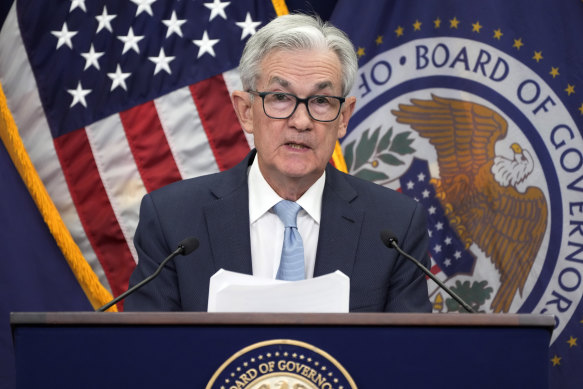Fed unveils smaller interest rate hike but says more rises are coming
By Christopher Rugaber
The Federal Reserve extended its fight against high inflation Wednesday by raising its key interest rate by a quarter-point, its eighth hike since March. The Fed signalled that even though inflation is easing, it remains high enough to require further rate hikes.
The central bank’s latest move put its benchmark short-term rate in a range of 4.5 per cent to 4.75 per cent, its highest level in about 15 years. Though smaller than its previous hike — and even larger rate increases before that — the latest move will likely further raise the costs of many consumer and business loans and the risk of a recession.

In a statement, Fed officials repeated language they have used since March that says, “ongoing increases in the (interest rate) target range will be appropriate.” That is seen as a signal that they intend to raise their benchmark rate again when they next meet in March and perhaps in May as well.
The Fed’s hike was announced one day after the government reported that pay and benefits for America’s workers grew more slowly in the final three months of 2022, the third straight slowdown. That report could help reassure the Fed that wage gains won’t fuel higher inflation.
Fed chair Jerome Powell will speak at a media conference at 6.30am AEDT.
With financial markets anticipating that the Fed will stop raising rates soon and possibly even cut them later this year, analysts predict Powell will need to push back against such optimism. If financial markets expect lower rates than what the Fed plans to deliver, the central bank’s already treacherous task can become even harder.
In some ways, the Fed’s challenge is trickier than it was last year, when inflation accelerated much faster than officials had expected. After being caught off guard — Powell had initially characterised high inflation as only a temporary phenomenon — officials developed a clear view of what was needed: An aggressive series of rate hikes to slow borrowing and spending, cool growth and curb high inflation.
“He’s got to put a hawkish tint to everything he says,” said Vincent Reinhart, chief economist at Dreyfus and Mellon and a former top Fed staffer. (In Fed parlance, “hawks” typically favor higher rates to control inflation, while “doves” often lean toward lower rates to support employment.)
“Everybody is basically saying, ‘Hey, Chair Powell, let’s do your victory lap,’ ″Reinhart said. “And he’s like, ‘We’re only where we are because of our vigilance, and we can’t let it down now.’ ”
Financial markets have strengthened in anticipation of lower rates ahead. In December, Fed officials had forecast that they would raise their key rate above 5 per cent. Investors, though, expect them to stop at a range of 4.75 per cent to 5 per cent and to end up cutting rates before the year is out. That’s true even though Powell has gone out of his way to stress that the Fed doesn’t expect to cut rates this year.
The divide between the Fed and financial markets is important because rate hikes need to work through markets to affect the economy. The Fed directly controls its key short-term rate. But it has only indirect control over the borrowing rates that people and businesses actually pay — for mortgages, corporate bonds, auto loans and many others.
More to come
AP
Most Viewed in Business
Source: Thanks smh.com